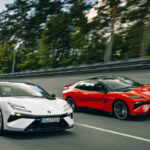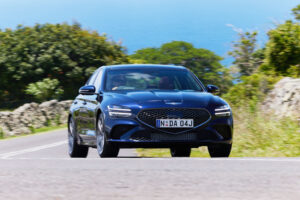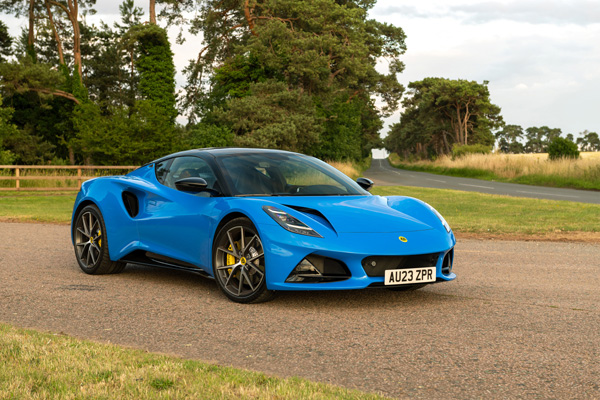
Normally we wouldn’t too excited about a four-cylinder version of any car. But in the case
of the Lotus Emira, the turbocharged 2.0-litre power plant produces almost as much power
as its supercharged V6 sibling.
How good is that?
Supplied by technical partner Mercedes-AMG, the all-aluminium, turbocharged 2.0-litre
unit is based on the world’s most powerful four-cylinder in series production.
Badged for launch as the Emira First Edition, it has been further developed by Lotus with
new intake and exhaust systems, plus a bespoke calibration matched to new transmission
shift-mapping.
Developing 268kW of power at 6600 rpm and 430Nm of torque from 3000-5500 rpm,
Lotus says the engine is a perfect match to the Emira’s lightweight, strong, stiff, bonded
and extruded aluminium chassis structure and aligns to the Lotus ethos of delivering
higher performance through light weight.
Character is enhanced by the inherent day-to-day usability and comfort of the smooth and
rapid shifting dual-clutch transmission.
It also offers the added advantages of lower fuel consumption and a target CO2 emissions
figure of 208g/km (WLTP).
As the final mainstream combustion engine Lotus two-seater, Emira is the most powerful
four-cylinder model from Lotus in a rich bloodline that spans the Elise, Esprit, Europa, Elan
and Elite.
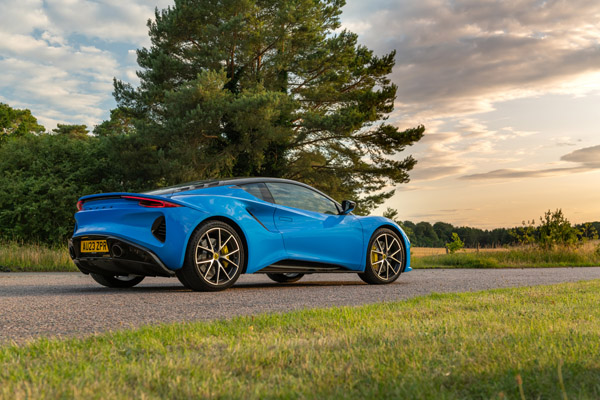
And, at 134kW/litre, it also has the highest specific power output in the Emira range.
Like the renowned 298kW/420Nm supercharged V6, the four-cylinder car delivers all the
performance and responsiveness that drivers expect – 0-100km/h in just 4.4 seconds and
a 290km/h top speed – while bringing its own unique character to the Emira range.
The V6 does it in 4.3 seconds and has the same maximum speed.
Designed solely for high-performance applications, the 1991cc engine features a cylinder
block produced using the advanced chill-casting process: compared to conventional sand-
casting methods used in high volume applications, this results in a uniform, fine-grained
structure which delivers the high strength and durability needed to withstand the high
loads generated.
Following motorsport practise, the block is also of closed-deck design for maximum
stiffness, and instead of conventional cast iron liners, the cylinder bores use a patented
low-friction coating to save weight.
For the optimal balance of high strength and low weight, both the steel crankshaft and
aluminium pistons are forged.
The cylinder head features four valves per cylinder and a 200bar direct injection system.
Intake and exhaust cams feature variable valve timing, while on the exhaust side, the
valves can be varied between high and low duration.
The turbocharger is a ‘twin-scroll’ design, meaning the turbine housing is split into two
separate ducts, matched to corresponding ducts in the exhaust manifold.
Sending drive to the rear wheels is Mercedes-AMG’s acclaimed eight-speed dual-clutch
transmission (DCT) – a first use of the technology by Lotus and fitted exclusively to the
Emira.
Compared to the six-speed manual and automatic transmissions offered on the Emira V6,
the DCT offers even quicker gearchanges with no torque interruption during shifting,
enhancing efficiency and shift comfort.
Drivers also have the choice of smooth, effortless changes if they leave the car in Drive, or
ultra-fast dynamic changes if they control the transmission themselves using the shift lever
in the centre console or steering wheel paddles.
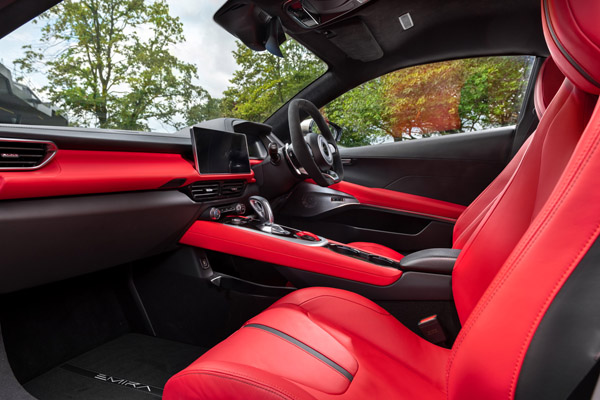
Launch control enables the driver to set the car up for optimum acceleration from a
standing start by maximising the available traction from the rear wheels and torque from
the powertrain.
The Emira’s light, stiff, bonded aluminium Lotus Sports Car Architecture gave the vehicle
dynamics engineers the perfect platform from which to develop the car’s ride, handling and
steering characteristics, all of which set the class benchmark, as every Lotus sports car
should.
The Emira features race-derived, lightweight, forged aluminium double-wishbone
suspension all round, which delivers the greatest control of the tyre contact patch
throughout the suspension’s full range of travel, contributing to the Emira’s exceptional
agility and responsiveness.
Eibach springs and Bilstein high-pressure monotube dampers are meticulously tuned to
suit the Emira, and offered with different settings depending on whether the customer
chooses the Tour or Sport chassis settings.
Tour is optimised for road use, offering softer springs and dampers, while Sport is track-
focused with stiffer springs and dampers, together with increased camber and toe angles
to maximise grip.
The anti-roll bar stiffnesses are also bespoke to Emira, and the component on the front
axle is now lighter too.
A choice of specially-developed tyres is available on the four-cylinder Emira, which are
asymmetrically sized to suit the exacting requirements of steering and traction –
245/35/R20 on the front axle and 295/30/R20 at the rear.




